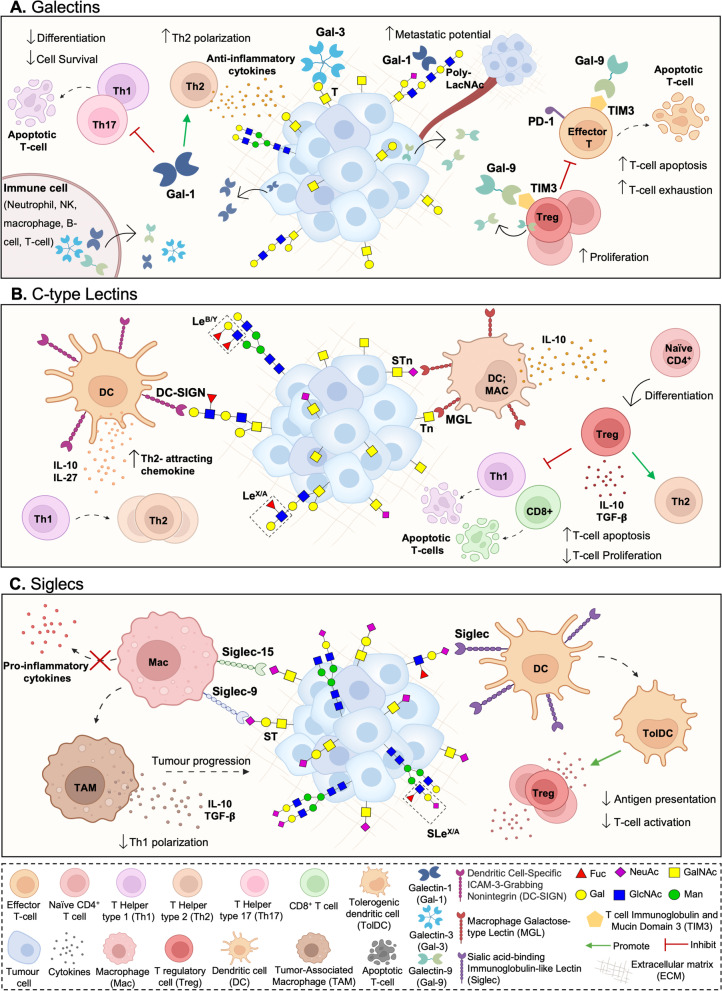Fig. 2.
Glycan binding receptors (GBR) interactions with tumour cell aberrant glycosylation as a novel class of immune checkpoints. Cancer cell associated glycans modulate immune cell responses by interacting with various classes of GBR, as galectins (A), most C-type lectins (B) and siglecs (C). Galectins (Gal) are secreted lectins that bind terminal β-galactoside-containing carbohydrates, including the T antigen. Tumour secreted galectins can induce apoptosis of activated human T cells, while antagonizing Type 1 T helper (Th1) and Type 17 T helper (Th17) cells survival. Furthermore, exhausted T cells frequently express galectin ligands, as the T cell immunoglobulin and mucin domain 3 (TIM3), regulating T cell exhaustion while modulating the inhibitory action of CD4 + CD25 + regulatory T cells (Tregs). Furthermore, galectins endow dendritic cells (DCs) with a tolerogenic phenotype capable of promoting interleukin 10 (IL-10)-mediated T cell tolerance. In turn, C-type lectin-like domain superfamily members as DC-SIGN, that avidly recognizes fucosylated lewis antigens on O- and N-glycans, and MGL, with affinity for terminal GalNAc (Tn antigen), are widely expressed by DCs and macrophages. Particularly, DC-SIGN engagement in the tumour microenvironment enhances interleukin -10 and -27, as well as Th2-attracting chemokine expression, shifting Thelper polarization from Th1 to Th2. MGL interaction with Tn antigens, and possibly STn, is also known to partially abrogate Th1 cell responses by promoting IL-17 and IL-10 expression, reducing effector T cell proliferation, and inducing T cell apoptosis. Siglecs are sialic acid-binding immunoglobulin-type lectins expressed by immune cells which selectively recognize tumour cell sialic acids, including STn and ST antigens. By interacting with tumour associated sialoglycans, siglecs modulate tolerogenic functions in DCs, preventing expansion of effector CD4 + and CD8 + T cells and increasing Treg cell numbers. In particular, STn and ST antigens seem to be potent agonists of inhibitory siglecs, as macrophage Siglec-15 and -9, respectively, inducing tumour-associated macrophage (TAM)-like phenotypes and permitting immune scape

